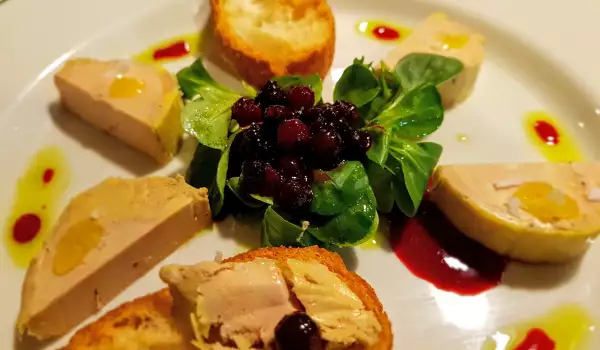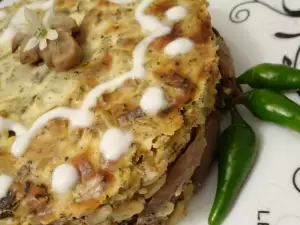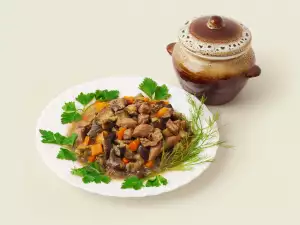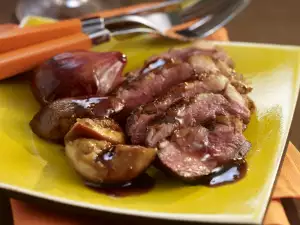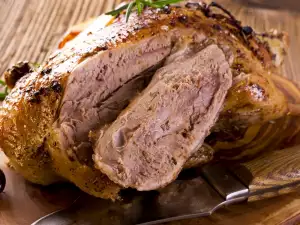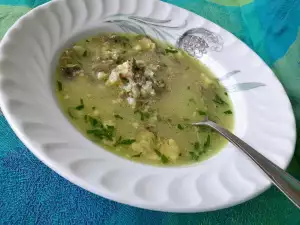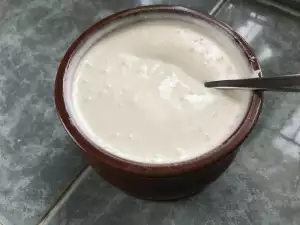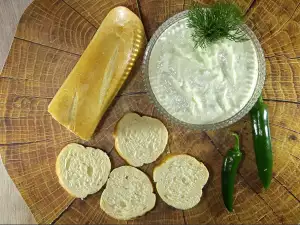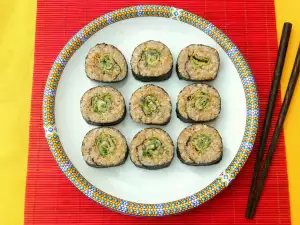How to make
The liver is left at room temperature for about 40 minutes, it is covered with a clean towel, so that it does not come into contact with light and darkens (becomes grey). As soon as it has relaxed enough, it is carefully cleaned from the veins without disturbing its integrity too much. To make it easier for you, you can make several transverse cuts and remove the inner veins, but do not cut completely.
Place in a bowl of cold water and ice cubes for 1 hour to set. If desired, you can make it in equal parts water and milk.
Take it out of the water onto a clean towel and dry it. It is sprinkled generously with the spices, brandy, salt and sugar and wrapped in cling film and on top of it a layer of aluminum foil, so that no air can enter from anywhere and it is tight. It is left in the fridge for 12 hours.
Cooking is done in two ways:
Without opening it up, boil for 25 minutes in a water bath at a temperature of 170°F (75°C). It is very important, that no water gets into the rolled liver, so make sure it is well sealed.
The other way is to place (packed tightly) in a hermetically sealed glass container (preferably fireproof) and boil it again in a water bath at the same temperature.
The cooked duck liver is placed back into a container of cold water with ice to abruptly stop the cooking process. It is stored in the refrigerator for 2-3 days, after which it is completely ready for consumption.
This is the technology for the so-called foie gras goose liver or micuit, which is exactly the same for duck in this case.
A great delicacy, which you can make at home and enjoy on toast with jam of your choice. Leave it at room temperature for 30 minutes before consumption.
If it is enclosed in foil, cut it into slices and if it is in a container, scoop it directly from it, like pate.
It's good for up to 15-20 days in the refrigerator and can be frozen and taken out for special occasions. Must be served with fine wine.
Enjoy your meal!
